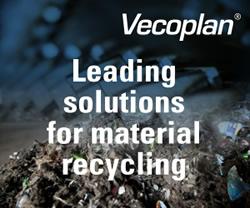Faster-responding storage allows us to operate the grid more efficiently, instantly balancing fluctuating supply and dynamic demand.
Update on Energy Storage in the USA
Matt Roberts | Energy Storage Association
What is the state of play for energy storage right now?
The energy storage industry is growing leaps and bounds, and opportunities for energy storage deployment are quickly opening across the country and around the world. Today, in the United States, we seem to be revising our projection estimates each quarter, anticipating even more deployments as markets and regulations are recognizing the value of energy storage systems. According to the US Energy Storage Monitor, deployment grew by more than 256 percent in 2015, and 2016 is on pace to be another record setting year in the U.S. alone. Markets across the globe are adopting cost-effective, reliable energy storage as well, with more than 2 gigawatts (GW) of new systems announced this year.
What are the main obstacles for broader energy storage deployment?
While energy storage is quickly advancing, historically these types of advanced energy systems have not been commonplace on the grid. This presents a number of challenges to overcome to ensure that storage systems have fair access to competitive markets and utility procurements. The two main obstacles are implementing regulations and market structures that account for storage systems operating parameters; and ensuring that competitive markets recognize the value that these systems provide and compensate performance and value delivered.
First and foremost, to be regulated is to be recognized, and even though systems are quickly going in around the country, most markets, integrated resource plans (IRPs), and utility procurements do not consider energy storage systems alongside traditional utility assets. Instead, we commonly see outmoded assets like peaker plants being procured without first considering multiple other solutions that are present and cost-effective today (energy storage, demand response, efficiency measures, etc.). ‘All-source’ RFPs – and IRPs that weigh storage side-by-side with other solutions – will drive innovative markets forward, encouraging regulators and decision makers to properly value the system-wide benefits that energy storage delivers.
When market and procurement consideration is given to energy storage, we must also make sure that we are properly valuing these systems and providing system owners compensation for the increased performance, resiliency, and flexibility delivered to the grid. In both short and long duration applications, storage systems enable us to operate the grid more efficiently and increases overall system reliability, saving money for utilities and ratepayers alike while improving overall system operations. But these savings and performance improvements, along with many other value streams that storage delivers, are not properly reflected in our markets and regulations.
The power sector is in the midst of immense transformation, and as we build the grid of the future we must ensure that we are enabling the deployment of advanced energy technologies through our competitive markets and regulations. We need to create markets that value this transformation to the flexible, resilient, and sustainable grid of the future.
What are the pros and cons of the top three energy storage technologies?
Energy storage defines a suite of technologies – batteries, flywheels, compressed air, thermal, flow batteries and more. While each of these systems may operate differently on the inside, their fundamental value is the ability to store energy when it is plentiful and utilize it when it is needed or most valuable to the grid.
Our grid is one of the longest supply chains in the world with very little storage capacity built in. We can stockpile fossil fuel, and some of our advanced hydroelectric facilities even run water uphill and back down again – but once energy is generated our ability to do anything other than consume it is very limited.
Storage systems make a more reliable electric grid possible, creating flexible, decentralized reserves of energy that can be tapped in to on demand. Faster-responding storage allows us to operate the grid more efficiently, instantly balancing fluctuating supply and dynamic demand. These systems are also used to defer and avoid costly investments in excess capacity and infrastructure that is currently needed to serve our nation’s growing peak loads.
Customer-sited energy storage enables homeowners and businesses to drastically lower their consumption while avoiding more expensive demand charges and time-of-use rates. Storage provides backup power and enables solar customers to generate on-site and consume their own energy even when the grid is down.
Through these various applications energy storage enables end-users to be partners in creating a more reliable and affordable electric grid, and means that utilities can deliver more sustainable energy from a more resilient system while adapting to the changing needs of businesses and homeowners.
Do you see the majority of storage being installed at the utility or at the end user site?
Currently, the largest application of energy storage system is at the utility scale, in major wholesale markets like PJM or MISO. These systems are being deployed for their performance, speed and accuracy, and are creating significant savings for grid operators and ratepayers for essential grid services. Many other utility applications – like capacity, infrastructure investment deferral, and peak demand reduction – are steadily growing as market opportunities as well.
Customer-sited systems (both commercial, industrial and residential) are rapidly advancing as a share of the overall market for energy storage. In fact, we project that by the end of the decade the capital expenditure for customer-sited storage systems will exceed that for grid-connected systems. This is due in part to the many valuable applications that can be performed as you move a storage system closer to the end-user load, and also the sheer number of potential customers for these smaller, distributed systems.
What states and utilities are leading energy storage deployment?
More than 20 states installed energy storage systems in 2015 as market rules and regulations come into place. New York, California, Hawaii and New Jersey have been quite significant thus far among state markets, while the PJM Interconnection wholesale markets has seen the lion’s share of energy storage system installation to date (covering multiple states in the East). Massachusetts in particular, as well as Washington, Oregon, Arizona and New Mexico have begun adopting policies that enable energy storage deployment – and many more are on the way. Additionally FERC and the remaining ISO/RTO markets are each seeking to address current regulatory barriers to adoption of advanced energy storage systems.
The Energy Storage Association works as the voice of the industry, engaging directly in both federal and state advocacy to promote the adoption of competitive and reliable energy storage systems. Our members work closely with regulators, legislators, and grid stakeholders to advance the industry and open markets for energy storage deployment.
How is the industry focusing on safety?
Our electric grid is the engine that drives our economy, and the entire utility industry puts safety and reliability and the forefront of operations. These advanced energy storage systems are built in hi-tech manufacturing facilities, and integrated with state-of-the-art control, containment, and safety systems. With any installation of high-powered energy equipment on the grid or a modular system in a consumer’s home, there are multiple layers of codes, standards, and certifications that must be achieved. Energy storage has played a role on our grid since Edison’s Pearl Street Station in the 1890’s, and modern systems are designed to ensure both system longevity and reliable operations under the constantly varying operating conditions of our grid and adapting to modern consumer habits.
Electrical energy storage systems are still like other electrical infrastructure though, just like invertors or other substation equipment they are frequently moving considerable amounts of energy through them at high voltages. While all systems can be meticulously designed to withstand the rigors of operations reliably and safely, unavoidable conditions or accidents can occur. Codes organizations and building officials create system standards to mitigate risks for all types of installations, and emergency responders are trained to address mechanical failures and protocol for fires involving electrical equipment of different types. System operators and manufacturing facility managers also develop comprehensive plans for addressing any accidents, and our experience with the deployment and integration of these technologies is leading to continual improvement and refinement of these best practices.
As these systems continue to become more and more commonplace, we need to ensure that we are educating customers and end-users and that the energy and utility industries continues to prioritize safety and demonstrate excellence employing best practices and state of the art solutions.
Can energy storage thrive without state or federal incentives? Why or why not?
Absolutely, the storage of energy on the grid is inherently valuable and the industry is growing leaps and bounds with no current incentives in place at the federal level (some states have developed their own incentive programs with the absence of a dedicated federal program). The question when considering federal investment in energy storage is not about the value or cost of energy storage systems – they have already proven cost effective in numerous applications, and more valuable than the outmoded solutions we used to deploy.
The reason that incentivizing energy storage is important is because these systems are critical to achieving our clean energy and sustainability goals, and storage enables grid modernization. We all agree that business as usual is untenable, our grid is aging and the societal effects of fossil fuel are negatively impacting our health, economy, and climate. I strongly support the implementation of an investment tax credit (ITC) for energy storage technologies so that we can create a more modern and flexible grid that is able to more readily integrate variable generation like renewables, and adapt to the increasingly dynamic loads of modern consumers.
Additionally, energy storage is a once-in-a-generation global economic opportunity. Annual markets will be billions of dollars before the end of the decade, and energy and grid operations savings are already putting millions of dollars back in consumers’ pockets. By creating market and regulatory certainty, the United States can continue to lead the world and build an innovation-driven industry, bringing jobs and investment to the country in the manufacturing, installation, and operation of these state-of-the-art systems. China, Germany, Japan, South Korea and others are preparing for the future with sweeping regulatory reform and government support to capitalize on this opportunity. If we lag behind and don't have a cohesive vision for the future we will inevitably miss out on learning, miss the out on transforming the grid - if we don't set our sights on the storage-enabled grid of the future, we will miss out on the opportunity to change the world.

About Matt Roberts
Matt Roberts serves as the Executive Director of the Energy Storage Association, overseeing operations and strategic initiatives for the industry’s trade association. Matt has over 10 years of experience in energy policy, communications and association management with a recognized expertise in renewables, distributed generation, and sustainable infrastructure. Prior to joining ESA, Matt oversaw policy and operations for a global energy trade association focused on reforming the transportation infrastructure and expanding the use of renewable fuels. Matt started his career as a House staffer and speech writer, and has consulted in the energy industry with organizations and companies focused on solar, wind and geothermal energy policy and deployment.
The content & opinions in this article are the author’s and do not necessarily represent the views of AltEnergyMag
Comments (1)
Featured Product

